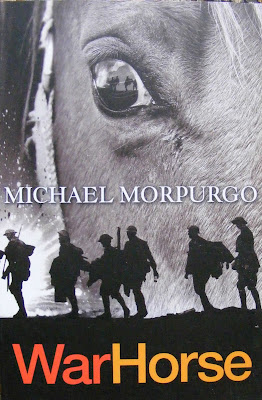An interview with Frances Bell, artist
I'm delighted to have been able to interview Frances Bell, equestrian artist. I have seen a lot of sporting art over the years, and what I love about Frances' paintings are her fresh take on horses at work. We're all familiar with the traditional portrayal of horses galloping over fields, but Frances' works take another view.
I used to cover my jotter with drawings of horses when I was at school, and still draw rather inaccurate horses now if bored in meetings. Have horses and art always been something that for you, have gone together?
I used to cover my jotter with drawings of horses when I was at school, and still draw rather inaccurate horses now if bored in meetings. Have horses and art always been something that for you, have gone together?
I
also drew a lot as a child, and horses were among the subjects. This was mainly
because I was interested in horses, so along with my other hobbies I attempted
to draw them. I loved the idea of capturing the individual horses, but
didn't often succeed! As I got to being a teenager I became more aware of the
huge history of horses in art. I remember seeing Stubbs' Whistlejacket on a postcard
and thinking that this was a masterpiece (I still do) and the sporting art of
Snaffles, Lionel Edwards and Munnings was rolling around in my head too. So as
a broader interest in art flourished, I kept a view of the equine subject and
its most dedicated painters.
Are there any artists (equine or otherwise!) whose works you have been inspired by?
On
top of the others I mention above, I think that now I look at lot to Munnings.
His technique is very much of interest, as is the style of another very great
portrait painter John Singer Sargent (who himself painted the odd horse) as
they share an affinity of style. I love the long broad stroke that Munnings
uses. It's extremely hard to do!
But
the joy is that you discover painters all the time who employ the equine
subject, as horses, like dogs, have accompanied us through so much of human
history and they therefore pop up on all the art and sculpture too. This rich
history feeds a modern painter’s ideas.
You’re
a portrait and landscape painter as well as an equine artist. Are there any
particular themes you like to explore through horses?
I
think equine art has been fairly broad in its subject matter. You have
everything from pastoral scenes to portraits of kings, and sporting art, farm
and city life and cartoons, so you can go a lot of ways with it, but I think
like with all my work, I must feel happy that I'm getting my artistic idea
across. This is usually less thought than an atmosphere, using light, setting
and composition, and into that frame I collect features to do the talking for
me. I think horses, farm animals, humans and landscape do this so well, as
people relate so vibrantly to all these things.
Does painting
horses bring out a different response in you than painting people or
landscapes? Are there things you feel you can say more easily through using the
horse?
I
think horses add to a painting in their own right, I'm not sure that there are
messages that can be best conveyed through horses, but as I said before we
share such history with them, they increase our artistic story too.
You’ve worked as a
sporting artist, an area of the art world that was very much an all-male
preserve. What is it like, as a woman, working in this area?
Historically,
as with so many professions, a glass ceiling has existed for women, though I
would maintain that the a few artistic endeavours like literature and in some
cases painting are small rays of light where females did acquire some training
and then great merit. But I'm struggling to think of a painter of wildlife and
animals (though I'm useless on most art history) before Sue Crawford, who
dominated, and was female. But one of the attractions to art for me was the
very competent water colours of a great grandmother who did the typical
Victorian pastime of painting. So, some interesting things came out of enforced
artistic hobbies!
The
world of sporting art can be very traditional, but your paintings are not the
conventional horse, rider, jump picture that pops into the mind when you think
of sporting art. How do you feel about working within a genre that has very
definite expectations of what it expects to see in the finished article?
My
recent horse paintings have been a slight departure from the stereotypical
composition for an equine scene. I got the idea that I would try to paint
horses, most likely hunters, who've just reached the end of a long gallop and
therefore are tired and steaming. Basically, they would look nothing like the
neat, pampered, well turned out animal that arrives at the meet, and more the
well exercised and happy horse. Munnings did this for race horses, and they are
some of my favourites of his, but it's much harder to get to the right place
with an easel in the Northumbrian hills! I had to improvise!
You have an
exhibition on just now. What are your plans for the future?
I have two paintings at the Royal Society of Portrait Painters' annual exhibition in May.
I also have works for sale on the
Mall Galleries Buy Art, Buy Now platform.





Comments